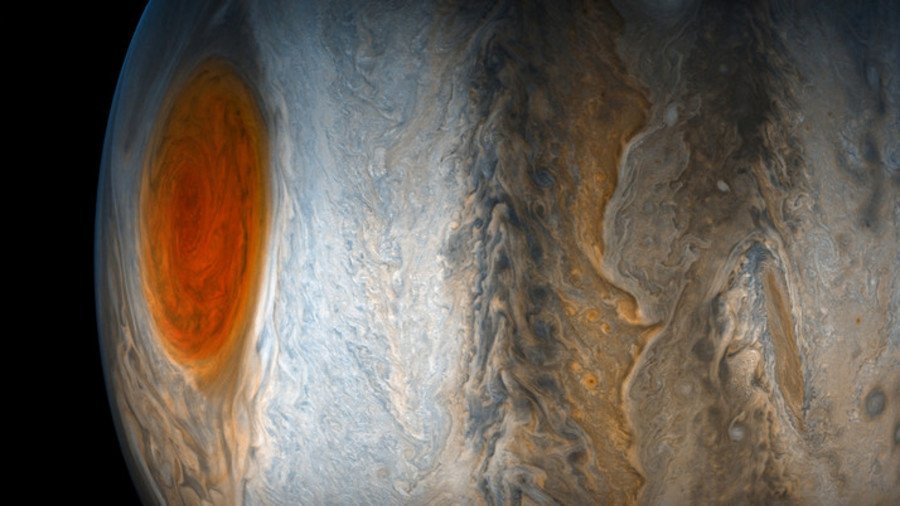Red alert: Jupiter’s ancient storm turning orange & changing shape (VIDEO)

Jupiter’s Great Red Spot has been shrinking for 150 years but scientists studying the enormous swirling storm have discovered that the iconic spot is changing color. It’s also growing longer.
The storm, which has been monitored since 1830, was once big enough to swallow three Earths, however it could now only fit one. This drastic reduction has left scientists unsure about its fate.
To try to figure out how it may change in the future, a team of researchers have traced the evolution of the cyclone by examining archived observations of the Great Red Spot. “Storms are dynamic, and that’s what we see with the Great Red Spot. It’s constantly changing in size and shape, and its winds shift, as well,”explained Amy Simon, lead author of new research on Jupiter published in the Astronomical Journal.
The team mined data from observations dating back as far as 1979, from the two Voyager missions, as well as information obtained from NASA’s Hubble Space Telescope and the Outer Planets Atmospheres Legacy (OPAL) project.
The new findings indicate that the Great Red Spot recently started to drift westwards faster than before and, as it has contracted in size, it has also stretched up. “It’s almost like clay being shaped on a potter’s wheel,” NASA’s Elizabeth Zubritsky explained.
Mission data shows Jupiter’s storms run far deeper than thought https://t.co/8PJVFidWiv
— RT (@RT_com) March 8, 2018
“As the wheel spins, an artist can transform a short, round lump into a tall, thin vase by pushing inward with his hands. The smaller he makes the base, the taller the vessel will grow.”
Researchers still haven’t figured out why the storm has become more intensely orange in recent years but one theory suggests it’s because it is growing taller.
“If the trends we see in the Great Red Spot continue, the next five to 10 years could be very interesting from a dynamical point of view,” the study’s co-author Rick Cosentino said. “We could see rapid changes in the storm’s physical appearance and behavior, and maybe the red spot will end up being not so great after all.”
Like this story? Share it with a friend!













